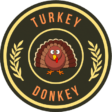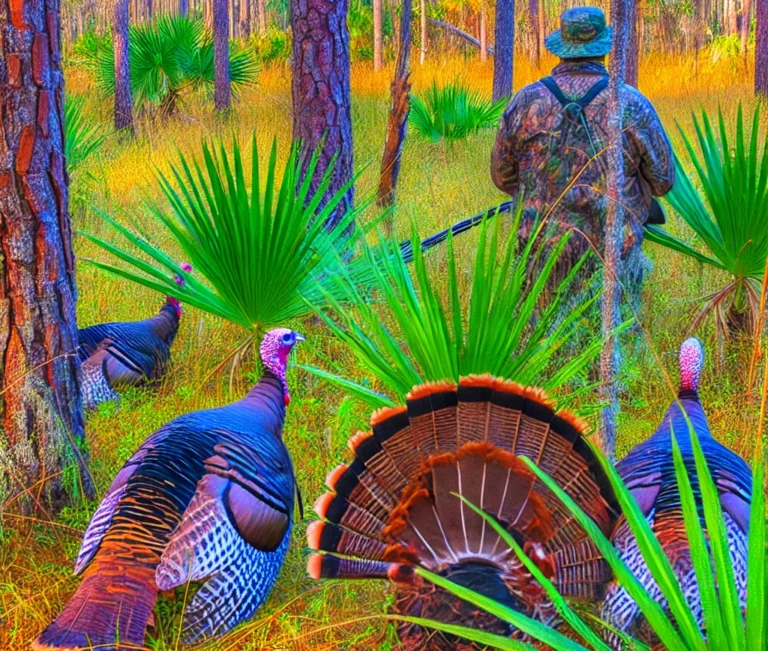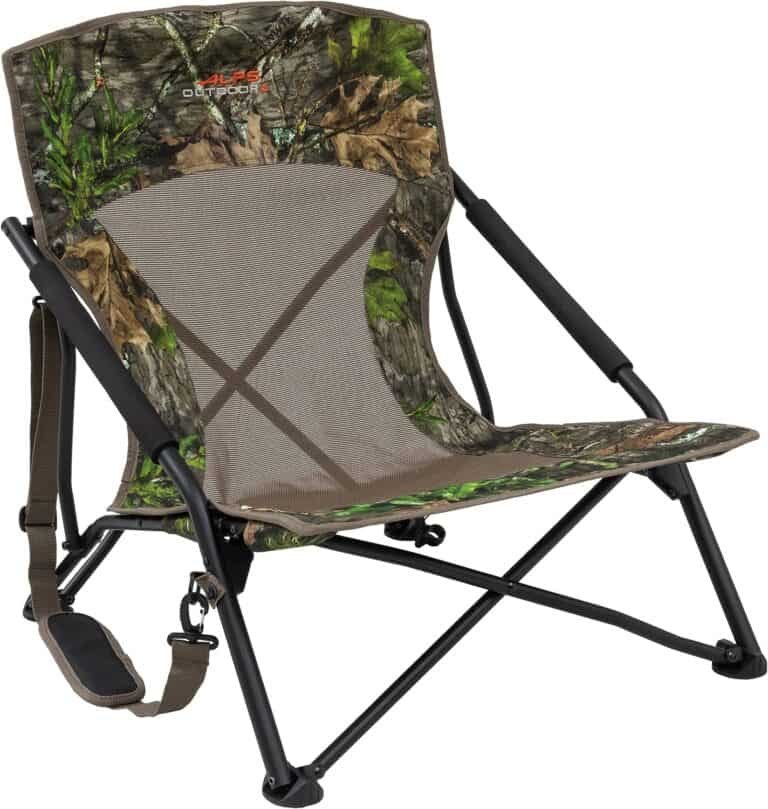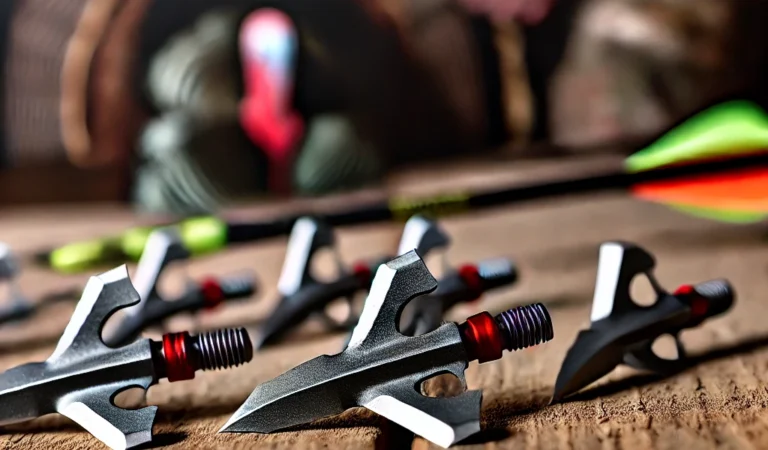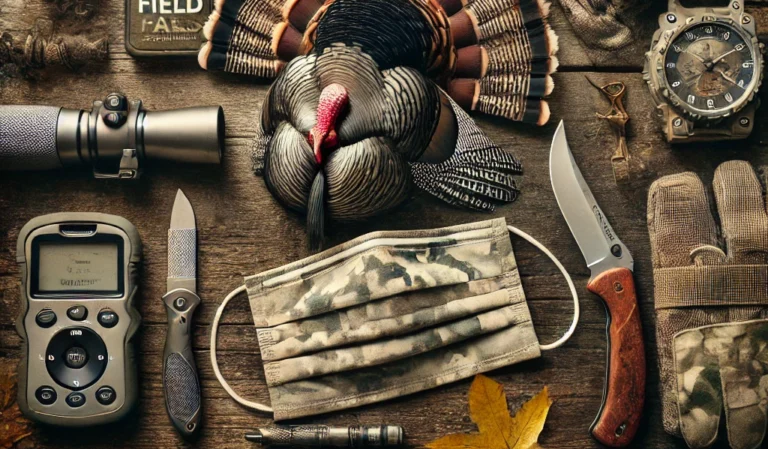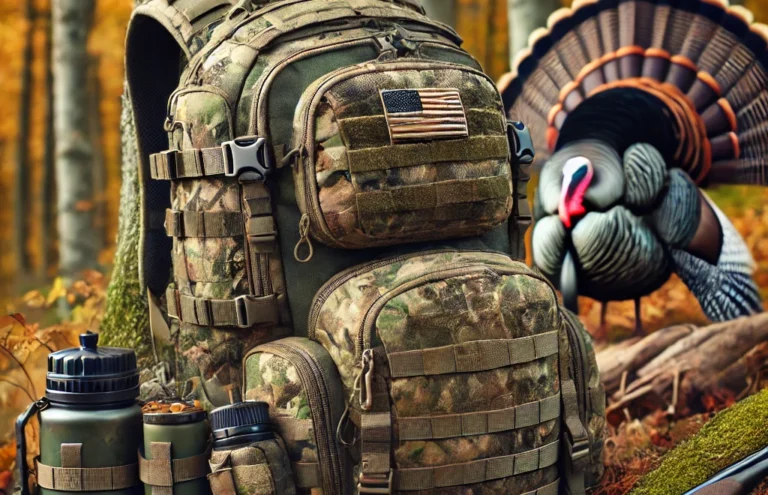Florida Turkey Hunting: Amazing Sunshine State Hunting 2024
Florida turkey hunting offers an exhilarating experience that combines skill, strategy, and a deep connection with nature. As the sun rises over the Sunshine State’s diverse landscapes, from expansive pine flatwoods to lush oak hammocks, hunters set out in pursuit of one of North America’s most challenging game birds. The unique blend of Florida’s warm climate, varied terrain, and abundant wildlife creates an ideal setting for turkey hunting enthusiasts.
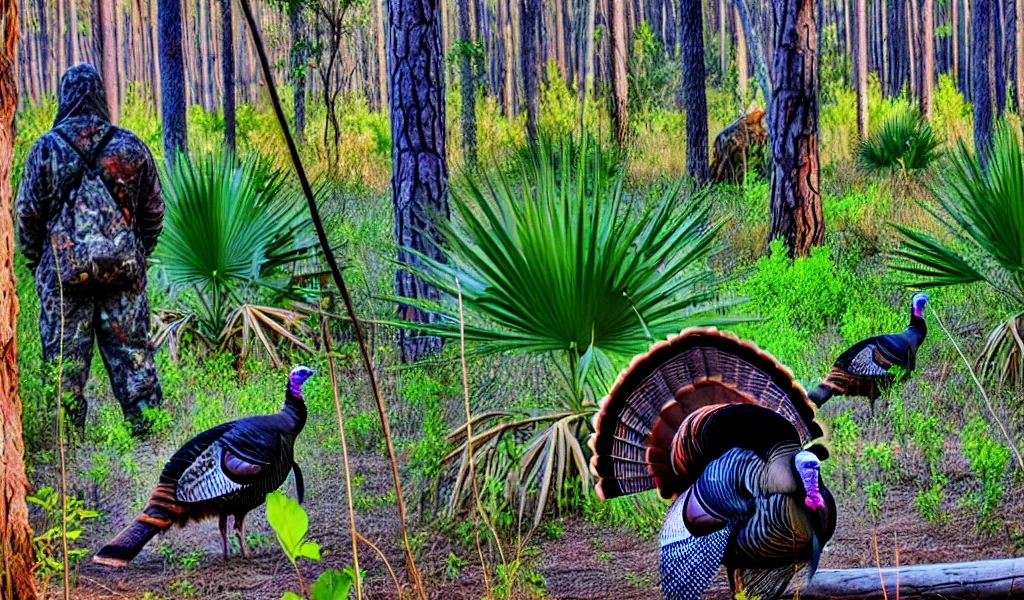
The Eastern Wild Turkey is characterized by its large size, with adult males, or toms, weighing an average of 18-22 pounds. Its plumage is predominantly dark brown or black, with shimmering bronze and iridescent greenish-black feathers adorning its body. Its long, fan-shaped tail feathers set it apart from other turkey species, creating a captivating display during courtship rituals.
The Eastern Wild Turkey’s remarkable physical attributes aid its survival in Florida’s diverse ecosystems. Its eyesight is acute, and it can detect movement from impressive distances.
Additionally, their keen hearing allows them to pick up even the faintest sounds made by intruding hunters. They have adapted well to Florida’s habitat variations, whether pine flatwoods or cypress swamps.
Osceola Turkey and Osceola Turkey Hunts
Ah, the elusive Osceola Turkey! These birds are truly a Floridian treasure found nowhere else on Earth. Named after Chief Osceola of the Seminole Tribe, who fought bravely against America’s encroachment on Native American lands in the early 19th century, these turkeys embody resilience and spirit.
Osceola Turkey hunting showcases distinct characteristics that distinguish it from other subspecies. It has a darker overall coloration than its Eastern counterparts, with an intense mahogany hue enveloping its feathers.
Their feather tips often display a striking iridescent coppery sheen, creating an alluring spectacle under the Florida sun. Apart from their looks, Osceolas possesses unique vocalizations that are unmistakably Floridian.
Osceola turkeys have adapted to thrive in Florida’s diverse habitats. They are particularly fond of roosting in cypress swamps and hammocks near water bodies, where they can seek refuge from predators and forage for food.
Their ability to navigate through dense vegetation and fly swiftly makes them a formidable opponent in the hunting arena. Understanding the distinct characteristics and behaviors of both Eastern Wild Turkeys and Osceola Wild Turkeys is vital for any aspiring turkey hunter seeking to conquer Florida’s challenging hunting grounds.
Florida Turkey Hunting Regulations and Licensing
Explanation of hunting seasons and bag limits
When hunting turkeys in the beautiful state of Florida, it’s crucial to be well-versed in the regulations and hunting seasons established by the Fish and Wildlife Conservation Commission (FWC). The FWC ensures all folks have ample opportunities while preserving the turkey population for future generations.
Turkey season typically runs from March to April, with specific dates varying yearly. For accurate information on season dates, folks should check the FWC website or consult their local wildlife management area.
Additionally, bag limits differ depending on whether you’re hunting on private or public land. Chasers are generally allowed two turkeys per day on private land, whereas on public land, stricter regulations may limit harvests to one per season.
Required licenses, permits, and tags for turkey hunting
Now that we’ve covered the seasons and bag limits, let’s dive into the licenses, permits, and tags required for an exciting turkey hunt. To legally pursue turkeys in the state, you must obtain a valid Hunting License.
This license allows you access to various game species throughout the year while supporting wildlife conservation efforts. Additionally, legally obtaining the necessary licenses and permits is crucial.
However, it’s important to note that having a hunting license alone doesn’t grant permission specifically for turkey; additional permits are necessary. For turkey enthusiasts looking to hunt on private lands or wildlife management areas designated as “limited entry hunts,” a quota permit is required in addition to your general license.
Planning Your Hunt

When planning your Osceola turkey hunting outfitter, timing, and location are everything. The spring turkey season typically runs from late March to early May, with the peak season usually occurring in April. This is when the Osceola turkeys are most active, with males gobbling and females nesting, making it the prime time for a successful hunt.
Osceola turkeys are predominantly found in central and south Florida, thriving in dense forests, swamps, and agricultural lands. Look for areas rich in food sources like oak and pine trees and agricultural fields. These habitats provide the perfect environment for Osceolas to forage and roost.
As an Osceola turkey outfitter, we have access to over 100,000 acres of prime turkey habitat. Our experienced guides will help you choose the best location and time for your hunt, significantly increasing your chances of a successful harvest. Whether navigating the dense swamps or the sprawling agricultural fields, our expertise ensures you’re in the right place at the right time.
Essential Gear and Equipment
The right gear and equipment ensure a successful Florida Osceola turkey hunt. Here are some essentials to bring along:
Shotgun: A 12-gauge shotgun is the most popular choice for turkey hunting, with a minimum of 3-inch shells to ensure you have the power needed for a clean shot.
Ammunition: Use high-quality turkey loads with a minimum of 1 1/2 ounces shot. This ensures you have the right spread and impact to take down a turkey effectively.
Turkey Calls: A variety of turkey calls, including box calls, slate calls, and diaphragm calls, can help you locate and attract Osceols. Mastering these calls can make a significant difference in your hunt.
Camouflage Clothing: Wear camouflage clothing and a face mask to blend in with your surroundings and avoid spooking the turkeys. Turkeys have excellent vision, so staying hidden is key.
Binoculars: Bring binoculars to help you spot turkeys from a distance. This allows you to plan your approach without alerting the birds.
Turkey Vest or Turkey Seat: A turkey vest or seat can provide comfort and support during long sits, ensuring you remain patient and ready for the perfect shot.
As an Osceola turkey outfitter, we provide our clients with high-quality gear and equipment to ensure a successful and enjoyable hunt. Our goal is to equip you with everything you need for a memorable and fruitful experience in the field.
Preparing for Success
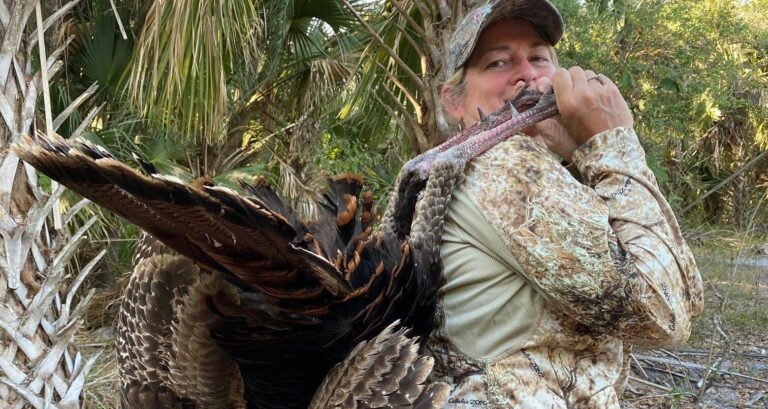
Scouting and Understanding Behavior
To increase your chances of a successful Osceola turkey hunt, scouting and understanding turkey behavior is essential. Here are some tips to help you prepare:
Scout Before the Season: Scout the area before the season to locate turkey roosts, feeding areas, and travel routes. Knowing where the turkeys are likely to be can save you time and increase your chances of success.
Understand Behavior: Osceolas are known for their aggressive behavior during spring. They will often gobble loudly and aggressively defend their territory. Understanding these behaviors can help you anticipate their movements.
Learn Turkey Vocalizations: Learn to recognize different turkey vocalizations, including gobbles, yelps, and purrs, to help you locate and attract turkeys. Each sound has a specific meaning and can be used to your advantage.
Use Trail Cameras: Trail cameras monitor turkey activity and identify patterns. This technology can provide valuable insights into the best times and places to hunt.
Be Patient: Osceolas have excellent hearing and vision, so being patient and quiet during the hunt can make the difference between a successful hunt and an empty-handed return.
As an Osceola turkey outfitter, our experienced guides will help you scout and understand turkey behavior, increasing your chances of a successful harvest. With our guidance, you’ll be well-prepared to navigate the challenges of finding these elusive birds and enjoy a rewarding experience in Florida’s beautiful outdoors.
Methods & Tactics
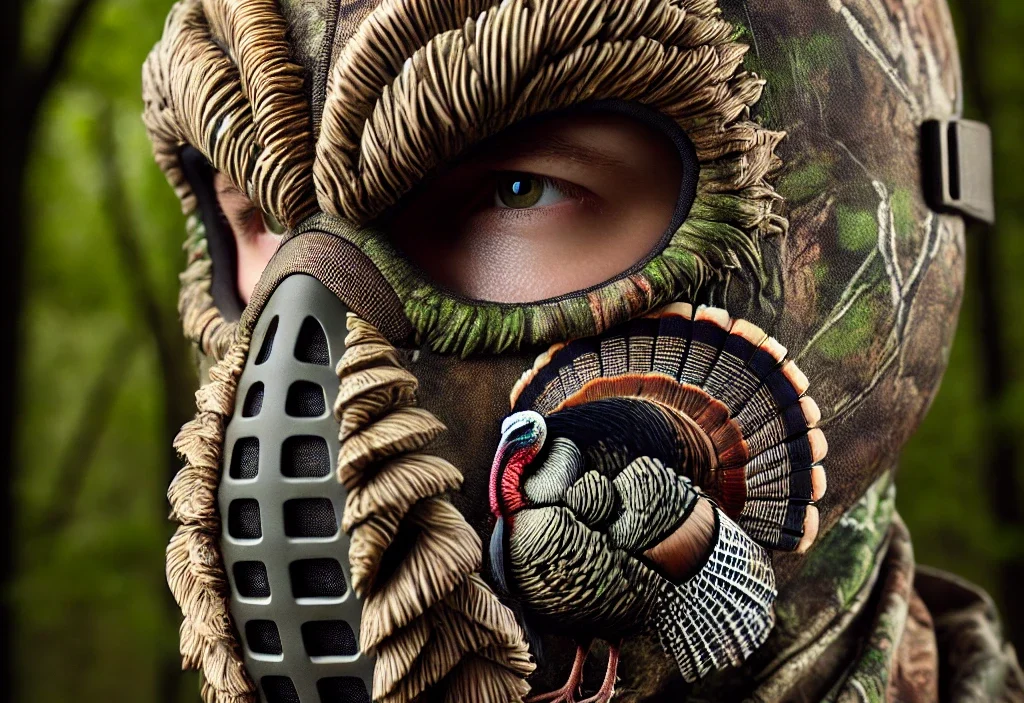
Avid hunters employ several popular methods. One widely used approach is ambush hunting, in which they position themselves strategically, such as near feeding areas or along travel routes, patiently awaiting their quarry.
This tactic requires careful observation and knowledge of turkey behavior to predict their movements. Similarly, hog hunting also demands high skill and dedication, with guides often showcasing their passion and expertise to ensure client satisfaction. Stalking turkeys is another method that involves cautiously moving through the woods while trying to close the distance between you and the targeted turkey.
